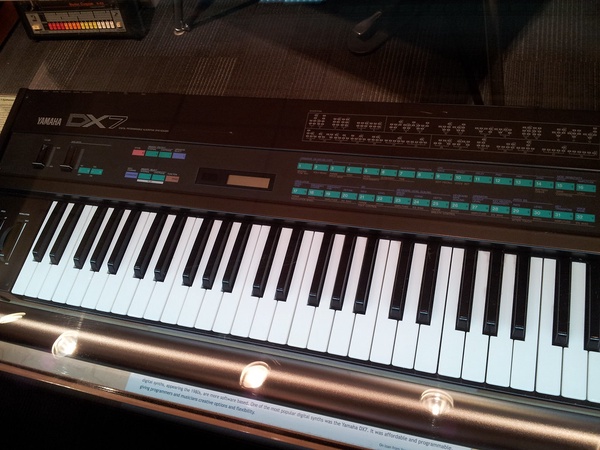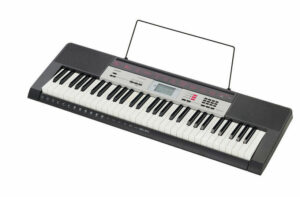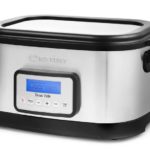The best synthesizers for beginners and professionals for home: rating, review

creativecommons.org
What could be better when your child, instead of playing computer games or mindlessly spending time on Instagram, TikTok or other social networks, chose to strive for something more - music. Playing the piano or string instruments is not that easy, especially for a beginner. But there is one instrument that combines so many functions that you can create a unique orchestra at home in just 5 minutes. And learning on such equipment is simple and stress-free. We're talking about the best synthesizer.
In this article we will talk about which synthesizer is best to buy for home, what is suitable for a beginner, and we will also recommend several models that, in our opinion, are best suited for these purposes. Let's begin!
The content of the article
Which synthesizer is better - selection criteria
It's time to talk about what's included in the top synthesizers for beginners, because you've asked yourself this question since you came across this article. A sea of well-known and unknown brands, marks, and functionality has attacked the inexperienced future musician like an avalanche - what to choose? We did not leave you in the lurch and have prepared a short excursion into the world of a musical instrument. According to our observations and customer reviews online, it is important to go through the equipment selection period in several stages:
- Gaining knowledge on the basic characteristics and functions of the synthesizer you need in your home.
- Who are you buying this instrument for and how much are you willing to pay for the pleasure?
Specifications and functions
Like any musical or ordinary household device, a synthesizer has a number of parameters. Staring at a bunch of numbers is intimidating for the average shopper, but it's not that hard when you have a trusted assistant. If you really want to get the best synthesizer, you can’t do without our article.
The operation of the keys is characterized by the following components:
Keyboard. This is the first and most important thing that is indicated in the technical passport. The keys differ in several parameters: the method of producing sound and dimensions. With the latter, everything is simple - these are either standard, “piano” keys, or a smaller copy for teaching a child. It is also worth looking at the number of keys on the working unit: for a beginner, choose a model with 31 or 62 keys; for an experienced musician - 76 or 88 keys.
Based on the features of the keyboard, a distinction is made between regular models and dynamic ones (with the possibility of additional customization). This or that keyboard also depends on your goals: synthesizers for those new to the music world can be lightweight so that the process of acquiring knowledge becomes quick and easy. And to play the piano realistically, you already need heavy mechanical keyboards - a complete thrill for a more or less understanding musician.
Sound capabilities. Here the processor or tone generator is mainly indicated, but since there is no single classification in this parameter, each manufacturer tries to stand out with its “highlights”.This will mean nothing to some, but to others it will open a new world of synthesizers and make them look at equipment differently.
For example, some of the most popular technologies are: Morphing Air synthesizer from Casio, RGE tone generator in Yamaha instruments, AWM Stereo Sampling processor for Yamaha PSR operating equipment. In simpler versions, inexpensive copies of these technologies are installed, because for children or beginners it is not so important to have any professional features or additional features. The main thing is to play beautifully.
Additionally, in our review of synthesizers it is worth highlighting other sound characteristics:
- Polyphony - determines the maximum number of notes that can sound simultaneously. Varies from 8 notes for a children's instrument to 256 notes in top synthesizers for an advanced user.
- Timbres - how many variations of sound there are. The standard choice is piano, strings, and percussion tones. The higher the price tag in the store, the greater the range of tones you will receive in return.
- Accompaniment styles - what can be added as part of the musical accompaniment. The choice is similar to the previous parameter - the types of accompaniment directly depend on the manufacturer’s pricing policy.
- Various effects and additional highlights. If the number of effects for all companies is more or less the same - imitation of additional sounds, various echoes, phrasers, delays and other incomprehensible words (variety is a matter of the direction of the instrument and its cost) - then with professional programs everything is much more complicated. Programs for training - from banal hints in the form of keyboard backlighting to individual applications on a smartphone that come into contact with the synthesizer.There are also settings for adding tracks to the instrument’s memory, inserting a soundtrack, a bunch of special technologies to increase the realism of creating your own orchestra and other characteristics. The framework for acquiring so many bells and whistles is your imagination and needs (for example, why does a standard student need an instrument with a DJ console), as well as your financial condition.
- The ability to connect additional equipment and other parameters - the latter category is much easier to navigate. The only point is that if you are going to not only study, but also record your works, buy a sequencer. You can record both a solo part of each instrument, and the overall picture - a full-fledged track. Here everything depends on the coolness of the sequencer, and it depends on the cost.
Rating of synthesizers for beginners
Casio CTK-1500

creativecommons.org
An instrument from the Casio CTK-1500 starts in our rating of synthesizers. This is the most budget option for 61 keys from this company. The musical equipment has a built-in polyphony of 32 voices, 120 timbres, 70 rhythms and 50 rhythms of additional dance music.
The main feature of the model is dance music, which allows you to produce complex dance grooves or catchy melodies with just one press of a key. The weight of the device is only 3.3 kg. There are built-in speakers powered by batteries.
One of the disadvantages is the lack of a power adapter in previous models, but you can always buy it separately from the instrument at any music store.
YAMAHA PSR-E263
The synthesizer has a polyphony of 32 voices, 400 timbres, 130 styles and 112 additional sounds are built into it, which makes it noticeably stand out from the device from Casio.Some of the variable sounds are “borrowed” from earlier versions of Yamaha equipment. The optional Yamaha Education Suite (Y.E.S.) helps you navigate the instrument and sets you on the path to quality music.
The only disadvantage we can add is the non-dynamic keyboard.
Casio CT-S300
The top model in the line from Casio is Casiotone. It has a 61-key keyboard, retro design and light weight. Polyphony characteristics: 48 voices, 400 timbres, 77 regular styles and 50 in Dance Mode.
Among the main advantages, we immediately note the Dance Music mode, in which even a beginner can create the first track in just a few hours of training; Pitch Bend wheel for smooth tone adjustments; as well as connecting to a training application from a smartphone or PC. Also among the interesting differences we can add: convenient transportation, a cell for the sustain pedal, which can be purchased separately.
YAMAHA PSR-E363
Another copy from the already famous Yamaha. Polyphony technical parameters: 48 voices, 574 timbres, 165 style settings. It is very popular among beginners. Yamaha has collected everything you need for training:
- Powerful acoustic system;
- Sensitive keys;
- Many tones and styles;
- The reverb effect has been improved;
- Duo mode for two players to play at the same time.
Casio CT-X700
There is nothing complicated here - there are two competitors on the market: Casio and Yamaha. Therefore, one of them clearly had to be in the top.
What's inside the humble instrument: 48 voices, 600 tones, 195 styles and 160 for learning.
The “core” of the instrument was the brand new AiX processor, which was taken from older synthesizers from the manufacturer. AiX differs from other synthesizers with a completely new level of play:
- timbres worked out to the smallest detail;
- clear and rich sound of wind accompaniment;
- realistic drum accompaniment and high-quality bass.
Such a synthesizer will be both an excellent solo orchestra and part of a musical group.





